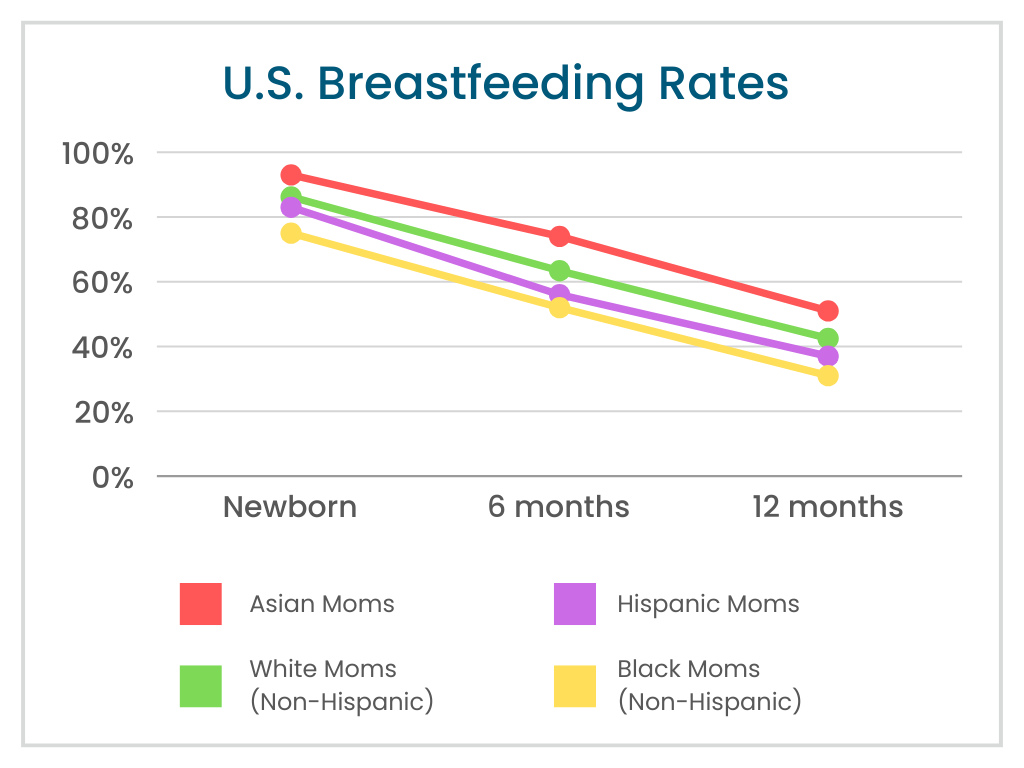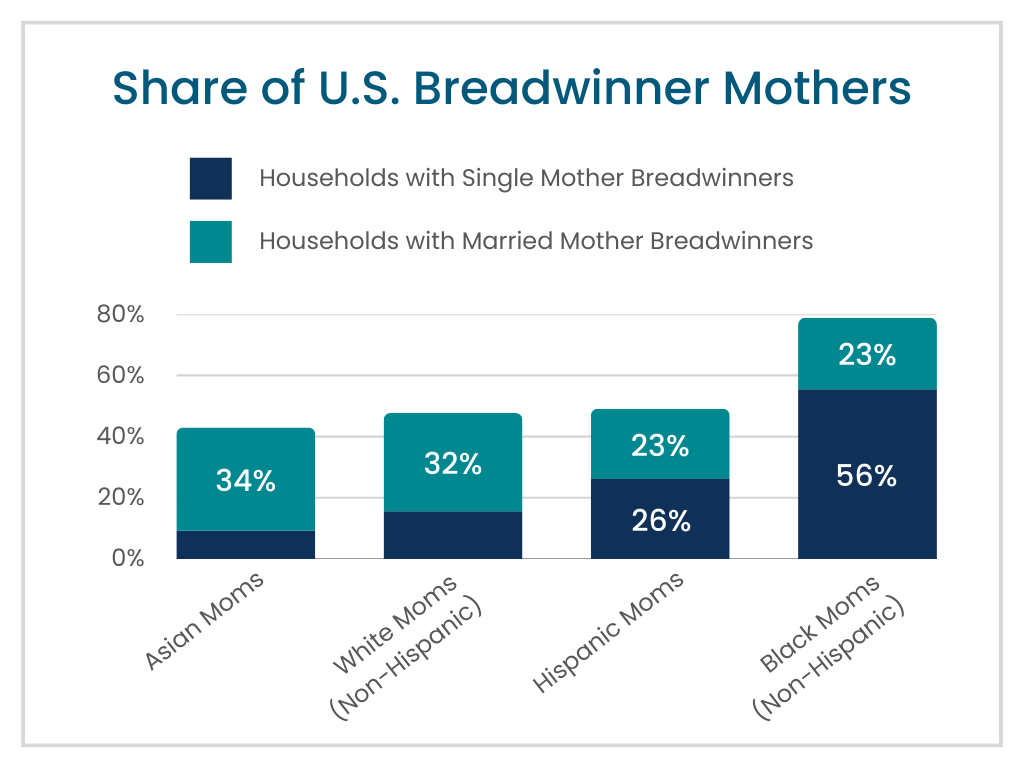
Racial Disparity in U.S. Breastfeeding Rates
While all moms face a similar set of barriers to breastfeeding, the magnitude of impact these obstacles create differs depending on where a mom lives, her income level, her education, and even her race.
As you can see in the chart below, breastfeeding rates vary greatly between moms of different races. Comparing the two ends of the spectrum shows a gap that’s upwards of 20 percentage points between Black (non-Hispanic) moms and Asian moms.

Let’s take a look at what might be contributing to the disparity.
Social and historical influences
Social circles majorly influence a pregnant woman’s perception of breastfeeding and her desire to pursue it. A 2023 study conducted by BMC Public Health showed that “Black [...] women were less likely to report receiving breastfeeding information from their family/friends” and “were less likely to witness breastfeeding within their community.” This lack of exposure to breastfeeding can leave a Black woman unprepared or hesitant to even attempt breastfeeding.
The study also reported Black women were “most likely to report not wanting to breastfeed or not liking breastfeeding.” This could be driven by intergenerational and historical trauma of wet nursing during slavery where “African American women were forced to breastfeed White children at the expense of their own,” as described in this American Academy of Pediatrics article. With the historical context added in, a Black mom’s concern of not being supported through her breastfeeding journey may also be escalated to a fear of judgement from her Black community.
Health service gaps
For many reasons, the first hours after birth are the most critical in determining the success of breastfeeding. A number of studies, including an analysis shared by the National Institutes of Health (NIH), show that moms who give birth in medical centers with onsite lactation education are much more likely to exclusively breastfeed. Unfortunately, the rate of implementing these practices in the U.S. is lower in neighborhoods with larger Black populations. This lack of support from the healthcare system means Black moms are immediately at a disadvantage, even if they want to pursue breastfeeding.
Financial burdens and employment
Moms are also less likely to initiate breastfeeding if they’re returning to full-time work quickly after birth or are returning to a workplace that makes pumping difficult. As you can see in the chart below, Black moms have a disproportionate financial burden as compared to moms of other races. This means Black moms must return to work quickly after birth to support to their families, further discouraging them from taking on the additional burden of breastfeeding.

The type of work they’re returning to has a big influence, too. According to EEOC reporting, Black women are more likely to be sales workers, clericals, and service workers – where sticking to a pumping schedule would be extra challenging – as opposed to working in management or in professional roles – where their time would be more flexible.
There is a silver lining though. For Black moms who do initiate breastfeeding immediately at birth, the duration they breastfeed tapers at the same rate as moms of other races. That means remediating initial barriers before and at the time of birth can start closing the gap.
Check out Boobbatical’s Equip section to find resources on how you can help support nursing moms of all races.